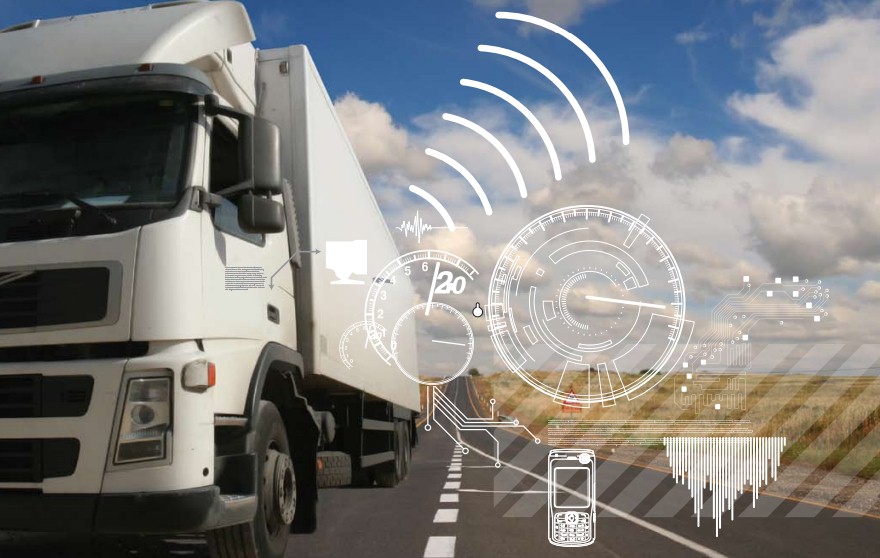[dropcap]T[/dropcap]elematics technology is revolutionizing the fleet management industry across the world. The technology is playing a key role in reducing resource expenditure and increasing resource savings for businesses while ensuring fleets comply with prevailing norms and standards.
With telematics technology users can access location, movement and status information and metrics of their vehicles via special web-based software applications or through in-house vehicle tracking enabled business applications. In Essence, GPS Telematics systems become platforms where users collect and transport valuable mobile resources, field information and activities.
In fact, the global Strategic Business Report on Fleet Management Systems projects that the market will reach a cumulative installed base of 47.4 million units by 2022. This is being driven by the strong adoption of new technologies, move towards reducing carbon footprints and paper trail, focus on achieving cost-containment, and higher logistical efficiencies.
Telematics systems can help businesses optimise their fleet in a number of ways, with features ranging from basic route planning to monitoring driver behaviour, integrating with packaging and deliveries, maintenance scheduling and much more. These systems are capable of analyzing the driving style and providing comprehensive feedback to both fleet managers and drivers in real-time.
Early version of telematics only provided route planning and compliance, but latest versions now come with a number of add-on features including temperature monitoring, fuel monitoring, audio communication among others. Data instruments are fitted on vehicles, the data is then transmitted to a control and communication center. This data is in form of the location coordinates they receive from GPS Satellites, telemetric information (such as temperature, vehicle location etc) from the connected sensor via GSM/GPRS network. The incoming information is then compiled by means of special software and recorded in a databank.
The technology is customized for the user and your vehicles can be monitored 24/7 thanks to desktop, smartphones and even SMS applications, in addition to a standard web software and digital maps. Only data transmitted by the equipment is retrieved from the internet. Thus, the system operates fast and efficient and can be used without problems. The transmission of this data has been made easy thanks to the advancement in communication networks and devices which have become more reliable over the past few years. This advancement has also made it technically feasible and financially viable for companies to capture and transmit the data in real-time make their assets/vehicles more visible and connected.
According to Ruth Kang’ong’oi, General Manager at Safetrac Limited, a leading provider of telematics technology in the East African region, the evolving mobile technology is assisting business to be able to have all the information they need about their fleet even while on the go.
Related: How technology is reshaping insurance landscape
‘’Telematics can help businesses increase productivity, lower operational costs, increase fuel efficiency, strengthen compliance and even increase customer service, the list goes on and on. It is time that businesses, especially in Kenya know about the tremendous potential of telematics and the benefits they can enjoy from the data being transmitted’’
‘’If this rich data from telematics can help optimize one vehicle, imagine the insight and benefits businesses will enjoy from scaling up deployment to hundreds of thousands or even millions of vehicles across the country. ‘’
This telematics data can be used for predictive analytics, such as predicting traffic which can help drivers identify and avoid congested roads and potential hazard. Information on vehicle speeding, or harsh deceleration or idling without ignition off, fuel levels can be used to tell a story about what’s happening on the road. This gives fleet owners or drivers the ability to know if there are traffic jams ahead and gives them time to correctly pick an alternative route. While GPS location on a smartphone is providing speed and location information like Google Maps, combining telematics data such as fuel levels, temperature opens up other possibilities for safety such as alerting drivers on vehicle fuel levels.
Frequent reports generated from telematics are not only relevant but also present the information about your vehicle/fleet in a manner that is easy for you to consume, understand and put to use.
Businesses in Kenya and East Africa, can, therefore, enjoy massive benefits by implementing telematics technology. The technology is a great way of organizing your drivers more efficiently and can save time and money. And for small businesses where cost is a factor, having a telematics system in place can greatly improve your fleet management and help make significant savings.
See author details below













Leave a comment